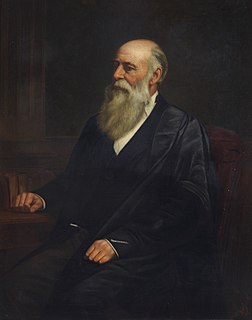 W
WCharles Cardale Babington was an English botanist and archaeologist. He was elected a Fellow of the Royal Society in 1851. Babington was the son of Joseph Babington and Cathérine née Whitter, and a nephew of Thomas Babington Macaulay. He was educated at Charterhouse and St John's College, Cambridge, obtaining his Bachelor of Arts in 1830 and his Master of Arts in 1833. He overlapped at Cambridge with Charles Darwin, and in 1829 they argued over who should have the pick of beetle specimens from a local dealer. He obtained the chair of botany at the University of Cambridge in 1861 and wrote several papers on insects. He married Anna Maria Walker on 3 April 1866.
 W
WHerbert Spencer Barber (1882-1950) was an American entomologist.
 W
WEugène Barthe (1862–1945) was a French entomologist. While living in Vienne (Isère), he created the journal Miscellanea Entomologica. In 1918, he moved into his father's house in Castanet-Tolosan (Haute-Garonne), where a street was later named in his honour. As well as editing the journal, he also wrote several books which act as supplements to the journal. These covered the beetle fauna of France and the Rhine Valley.
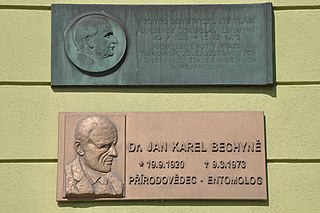 W
WJan Karel Bechyně was a Czech entomologist and a leading authority on leaf beetles (Chrysomelidae). He was the son of photographer Jan Bechyně and nephew of architect Stanislav Bechyně.
 W
WRoss Taylor Bell was an American entomologist with particular interest in the invertebrate natural history of Vermont, United States, and carabid beetles. Together with his wife, Joyce Bell, his work at the University of Vermont was largely taxonomic, where they described more than 75% of the rhysodine species known to science. Ross also wrote a number of seminal papers in his chosen field.
 W
WPhilipp Bertkau was a German zoologist born in Cologne.
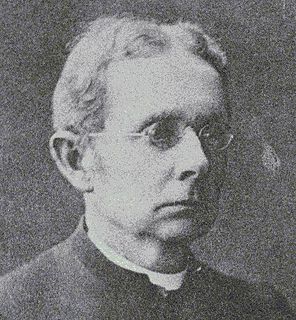 W
WThomas Blackburn was an English-born Australian entomologist who specialized in the study of beetles.
 W
WDoris Holmes Blake, née Doris Mildred Holmes, was an American entomologist and scientific illustrator.
 W
WCarl Henrik Boheman was a Swedish entomologist.
 W
WCándido Bolívar Pieltain (1897-1976) was a Spanish naturalist and entomologist.
 W
WGeorge Francis Bornemissza was a Hungarian-born entomologist and ecologist. He studied science at the University of Budapest before obtaining his PhD in zoology at the University of Innsbruck in Austria in 1950. At the end of that year he emigrated to Australia. There he first worked in the Department of Zoology at the University of Western Australia for 3 years, before pursuing a career with the Commonwealth Scientific and Industrial Research Organisation (CSIRO). Bornemissza was known for his work on the Australian Dung Beetle Project (1965–1985) while working at CSIRO's Division of Entomology. He wrote scientific papers and books base on his research and contributed a collection of mounted beetle specimens to the Australian National Insect Collection and the Tasmanian Museum and Art Gallery. In 2001 he was awarded the Medal of the Order of Australia for his services to Australian entomology.
 W
WStephan von Breuning was an Austrian entomologist who specialised in the study of beetles (Coleopterology), particularly within the longhorn family (Cerambycidae).
 W
WCharles-Juste Bugnion, full name Charles Juste Jean Marie Bugnion was a Swiss banker and Vaudoise political personality. He was a member of the Société Helvétique des sciences naturelles and one of the founding members of the Société entomologique de France.
 W
WHarry Eugene Burke was an American entomologist and authority on the Buprestidae and other wood-boring beetles and forest pests of the western United States. He was the first forest entomologist to be hired and assigned to study insects on the west coast, and the first entomology graduate of Washington State University. Born in Paradise Valley, Nevada, he earned a B.S. in 1902, and M.S. in 1908 at Washington Agricultural College and School of Science. He earned a PhD from Stanford University in 1923. He published over 60 articles, and co-wrote the textbook Forest Insects with R. W. Doane, E. C. Van Dyke, and W. J. Chamberlin.
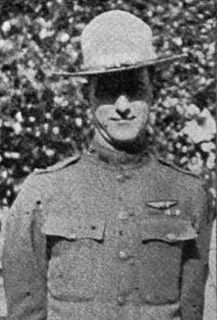 W
WWillard Joseph "Joe" Chamberlin (1890–1971) was an American entomologist and professor at Oregon State College who specialized in jewel beetles and bark beetles. He was also a pilot in World War I who received the French Cross of War and was recommended for the U.S. Distinguished Service Cross.
 W
WFélicien Chapuis was a Belgian doctor and entomologist. He specialised in Coleoptera and finished the text of Genera des coléoptères by Théodore Lacordaire (1801—1870) when Lacordaire died. He wrote:1874. Histoire Naturelle des Insectes. Genera des Coléoptères. Tome 10. Libraire Encyclopédique de Roret, Paris, 455 pp., pls. 111–124. (Phytophages) 1875. Histoire Naturelle des Insectes. Genera des Coléoptères. Tome 11. Libraire Encyclopédique de Roret, Paris, 420 pp., pls. 125–130. (Phytophages) 1876. Histoire Naturelle des Insectes. Genera des Coléoptères. Tome 12. Libraire Encyclopédique de Roret, Paris, 424 pp., pls. 131–134..
 W
WLouis Alexandre Auguste Chevrolat was a French entomologist, born 29 March 1799 at Paris and died 16 December 1884 in Paris.
 W
WFrank Cooper Craighead Sr. (1890-1982) was an American entomologist and naturalist, who specialized among other subjects on the larvae of Coleoptera.
 W
WCharles Robert Darwin was an English naturalist, geologist and biologist, best known for his contributions to the science of evolution. His proposition that all species of life have descended over time from common ancestors is now widely accepted, and considered a foundational concept in science. In a joint publication with Alfred Russel Wallace, he introduced his scientific theory that this branching pattern of evolution resulted from a process that he called natural selection, in which the struggle for existence has a similar effect to the artificial selection involved in selective breeding. Darwin has been described as one of the most influential figures in human history, and he was honoured by burial in Westminster Abbey.
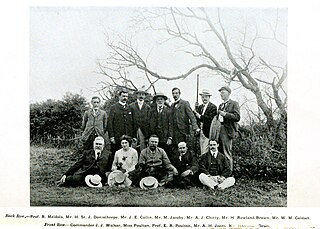 W
WHorace St. John Kelly Donisthorpe was an eccentric British myrmecologist and coleopterist, memorable in part for his enthusiastic championing of the renaming of the genus Lasius after him as Donisthorpea, and for his many claims of discovering new species of beetles and ants. He is often considered to be the greatest figure in British myrmecology.
 W
WCaspar Erasmus Duftschmid properly Kaspar was an Austrian naturalist and physician who made significant contributions to entomology, especially Coleoptera.
 W
WJ. Gordon Edwards (1919–2004) was an American entomologist and proponent of the use and safety of the pesticide DDT. He was professor of entomology at San Jose State University for 40 years, and namesake to the university's entomology museum. He was an outspoken critic of Rachel Carson and efforts to ban DDT, famously eating the substance to demonstrate its safety to humans. He was also a noted mountain climber, spending nine seasons as a ranger-naturalist in Glacier National Park during the 1940s and '50s, and returning often to collect insects and map routes. His 1961 book A Climber's Guide to Glacier National Park, republished several times since, made him known as the "patron saint of climbing" in the park, where he died while hiking, aged 84.
 W
WJohann Friedrich Gustav von Eschscholtz was a Baltic German physician, naturalist, and entomologist. He was one of the earliest scientific explorers of the Pacific region, making significant collections of flora and fauna in Alaska, California, and Hawaii.
 W
WLéon Marc Herminie Fairmaire was a French entomologist.
 W
WCharles Adolphe Albert Fauvel was a French lawyer and amateur entomologist who specialised in Coleoptera. He described and named 1,851 species and 96 genera in Staphylinidae. He wrote nearly 250 papers in the Revue d’ Entomologie, a journal he founded, and a multi-volume work, Faune gallo-rhénane. For unknown reasons, he abruptly stopped publishing in 1910 and became a recluse for the rest of his life. His insect collections are held by the Royal Belgian Institute of Natural Sciences in Brussels, the Natural History Museum of Bern, Switzerland and the Museo Civico di Storia Naturale di Genova, Italy.
 W
WVadim Gennadyevich Gratshev was one of world leading experts in palaeoentomology. Vadim graduated from the Moscow State Pedagogical Institute in 1987 and taught biology at a high school for three years until 1989. Then he decided to pursue academic science and joined the Laboratory of Arthropods at the Paleontological Institute of Russian Academy of Sciences in 1991, first as a Kuperwood Fellow of the Academy of Natural Sciences, and since 1994 as a full-time researcher. Weevils and dryopoids were always his main passion, although his area of interests extended far beyond that. He produced over 20 scientific papers, including an outstanding comparative study of the hindwing venation of the superfamily Curculionoidea published in co-authorship with Vladimir Zherikhin. Being a keen field researcher, he participated in numerous expeditions to the Maritime Province and Sakhalin Island, Kuznetskii Alatau, Novosibirsk Region, Armenia, Azerbaijan, Georgia, Tajikistan, Turkmenia, and Ukraine. The material he collected on his trip to the Drakensberg and Zululand in 2005 inspired him to commence a new project on Afrotropical Elmidae and Anthribidae. Being an optimistic, cheerful multi-talented individual with subtle sense of humour, he did not restrict his interests to extinct and extant beetles. He was an expert in noble orchids, aquarium design and raising geckos, and published several papers on those topics. He was a skillful wood-carver, and his knowledge of Japanese history and literature was not amateur.
 W
WLucas Friedrich Julius Dominikus von Heyden was a German entomologist specialising in beetles (Coleoptera). He wrote with Edmund Reitter and Ján Weiss Catalogus coleopterorum Europae, Caucasi et Armeniae rossicae. Edn 2. Berlin, Paskau, Caen (1902). He also worked with his father Carl von Heyden on fossil insects.
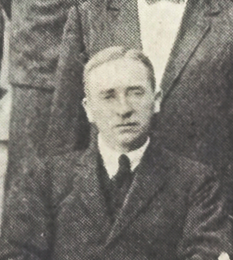 W
WMajor Richard William George Hingston was an Irish physician, explorer and naturalist who worked in India with the Indian Medical Service. He wrote several books based on his travels and natural history observations.
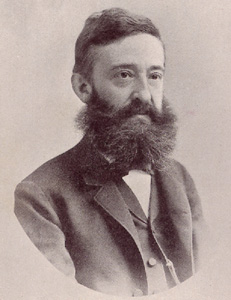 W
WGeorge Henry Horn was a U.S. entomologist who specialized in the study of beetles.
 W
WJames Augustus Hyslop was an American entomologist who founded the Insect Pest Survey of the U.S. Bureau of Entomology and Plant Quarantine.
 W
WCarl Gustav Jablonsky was a Berlin naturalist, entomologist and illustrator. He was also the private secretary to the Queen of Prussia, Elisabeth Christine of Brunswick-Wolfenbüttel-Bevern. He died at the age of 31. He willed his works to his colleague, Johann Friedrich Wilhelm Herbst, who became a naturalist and entomologist.
 W
WGeorgiy Georgiyevich Jacobson was a pioneering Russian entomologist, known especially for his 900-page book on beetles.
 W
WCharles Kerremans was a Belgian entomologist who specialised in Coleoptera, especially Buprestidae and Cicindelidae.
 W
WJohann Christoph Friedrich Klug, was a German entomologist. He described the butterflies and some other insects of Upper Egypt and Arabia in Christian Gottfried Ehrenberg and Wilhelm Friedrich Hemprich's Symbolæ Physicæ. He was professor of medicine and entomology in the University of Berlin where he curated the insect collections from 1810 to 1856. At the same time he directed the Botanic Garden in Berlin which contains his collections. Klug worked mainly on Hymenoptera and Coleoptera. The plant genus Klugia was named in his honour as well as the butterflies Geitoneura klugii and Heliophisma klugii.
 W
WHermann Julius Kolbe was a German entomologist from Halle, Westphalia. He was curator at the Berlin Zoological Museum from 1890 until 1921 specialising in Coleoptera, Psocoptera and the “Neuroptera”. He died in Berlin-Lichterfelde.
 W
WJean-Pierre Lacroix (1938–1989) was a French entomologist.
 W
WJohn Lawrence LeConte was an American entomologist of the 19th century, responsible for naming and describing approximately half of the insect taxa known in the United States during his lifetime, including some 5,000 species of beetles. He was recognized as the foremost authority on North American beetles during his lifetime, and has been described as "the father of American beetle study."
 W
WArthur Mills Lea was an Australian entomologist.
 W
WWilliam Sharp Macleay or McLeay was a British civil servant and entomologist.
 W
WSylvain Auguste de Marseul was a French Roman Catholic priest and entomologist. He taught in the Petit séminaire de Paris from 1833 to 1836. In 1842, founded a college at Laval, then from 1850 to 1853, he taught in Paris. In 1854, he left his college for America where he remained eight months and discovered entomology. The abbot of Marseul was the author of many publications. He founded in 1864 a review devoted to the Coleoptera and named L'Abeille, the Bee. On his death this publication was continued by Ernest Marie Louis Bedel (1849-1922) then by René Gabriel Jeannel (1879-1965). The abbot also studied the history of the beginnings of French entomology in a series of review article in the Bee under the generic title Entomologistes et de leurs écrits, Entomologists and their writings. His collection is conserved in the Muséum national d'histoire naturelle and his library in the Société entomologique de France.
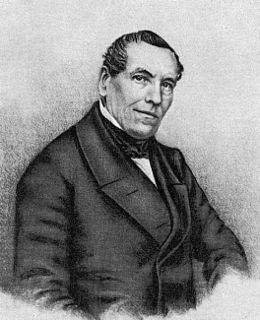 W
WÉdouard Ménétries was a French entomologist, zoologist, and herpetologist. He is best known as the founder of the Russian Entomological Society.
 W
WVictor Ivanovitsch Motschulsky was a Russian entomologist mainly interested in beetles.
 W
WJoseph Ernest Olivier was a French entomologist and botanist, known as a specialist in fireflies (Lampyridae). As of 1888 he was founder and editor of the journal Revue scientifique du Bourbonnais et du centre de la France. He was also involved in politics, serving as town councilor and later mayor of Chemilly, Allier, and was founder of the Gazette de l'Allier newspaper. He was a member of the Entomological Society of France and the Entomological Society of London. He was the grandson of entomologist Guillaume-Antoine Olivier. His botanical works include Flore populaire de l'Allier.
 W
WGuillaume-Antoine Olivier was a French entomologist.
 W
WHenri-Joseph d'Orbigny was a French architect and entomologist.
 W
WMaurice Pic was a French entomologist who specialised in Coleoptera. He contributed to Mary-Louis Fauconnet's Catalogue raisonné des coléoptères de Saône-et-Loire and wrote many short papers, many in L'Échange, Revue Linnéenne describing world beetles. His most important work was for Sigmund Schenkling's still very relevant Coleopterorum Catalogus.
 W
WEdmund Reitter was an Austrian entomologist, writer and a collector.
 W
WEugene Amandus Schwarz was a German-American entomologist who specialized in the study of beetles (Coleoptera). He was a popular and influential employee of the U.S. Department of Agriculture for more than fifty years.
 W
WAndrey Petrovich Semyonov-Tyan-Shansky was a Russian entomologist specializing in beetles. He was the son of Pyotr Semyonov-Tyan-Shansky.
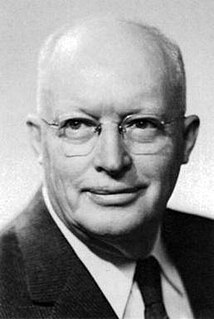 W
WVasco Myron Tanner was an American entomologist from Utah, and professor of zoology at Brigham Young University. He published over 140 scientific articles, mostly focusing on insects but also researching birds, mammals, reptiles and fishes, and founded the journal The Great Basin Naturalist.
 W
WJames Thomson was an American entomologist who specialised in Coleoptera.
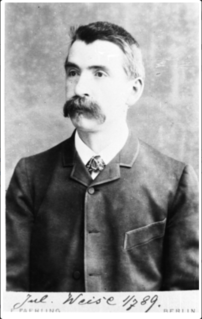 W
WJulius Weise was a German entomologist. He specialised in Coleoptera, especially Chrysomelidae and Coccinellidae, and was one of the first entomologists to use genitalia to identify and classify species.